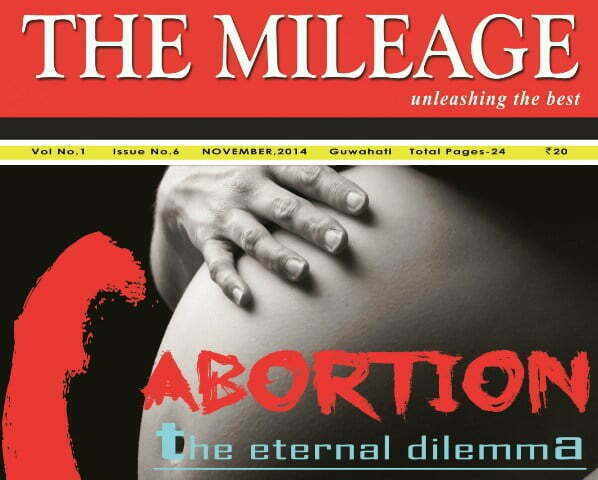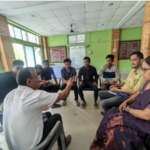Pangs of terminating a fetus
Vishal Upadhaya diagnoses here the differing viewpoints centered around aborting a growing fetus and highlights the trauma that a woman has to undergo whenever she faces a situation where the unborn human in her womb is not wanted……
Abortions have been around forever. But at different points of time in history it has received attention for differing reasons, some in support of it, but often against it. Abortion is primarily a health concern of women but it is increasingly being governed by patriarchal interests which more often than not curb the freedom of women to say abortion as a right.
The present scenario with entire focus of women’s health being on her reproduction, in fact preventing or terminating it, abortion practice becomes a critical issue. Given the official perspective of understanding abortion within the context of contraception, it is of utmost importance to review abortion and abortion practice in India.
Abortion is one of the most contentious issues in modern day life- and perhaps one of the most divisive. On one side stand those in favor of abortion-staunch advocates of freedom and equality. A woman has a right to determine what happens inside her own body without any interference whatsoever, they claim. If she wants to have a child she certainly may. But if she does not, even after she discovers she is pregnant, she should be free to choose not to. An unplanned or unwanted pregnancy is one of the most turbulent events in a woman’s life. Men’s lives and careers are not disrupted against their will by child bearing; why should such a thing be forced on women? But on the contrary Dr. Jones (Medical Director of IFPA) says, 38% of the men undergo through the same trauma in certain cases when they are left with no other alternative but to agree to the abortion of their spouse, girl-friends due to medical reasons.
On the other side stands the impressive array of prolife activists- those who oppose abortion. Their principles are the sanctity of human life and civilized society’s strict prohibitions against the taking of it. Conception produces a human being and destruction of any human being is murder-plain and outright murder for which the law prosecutes and imprisons murderers.
There are of course an even greater number of people holding the middle ground, feeling the tug of both sides. Most of them think that abortion is permissible sometimes but not always.
And then there is the woman herself. Regardless of age, marital status, social pressures and economic circumstances, choosing to end pregnancy is one of the most emotionally trying decisions for a woman. The choice is never simple, the procedure hazardous and the eternal chain of what life may haunt the woman for years, afterwards.
Medically abortion is defined as termination of pregnancy before the fetus becomes viable. Administratively this has been fixed at 28 weeks. Abortion can be either spontaneous or induced. Spontaneous abortions occur once in every 15 pregnancies. Induced abortions on the otherhand are deliberately carried out and may be legal or illegal. Among other things, massages, strenuous exercise, blood-letting, concoctions of herbs and physical intrusions into the uterus have been long used to induce abortion. Unfortunately, these indigenous methods are primarily responsible for abortion-related mortality and morbidity.
Most recent estimates show the annual number of abortions conducted worldwide to be about 36 and 53 million. In India, about 6 million abortions take place every year of which 4 million are induced and 2 million spontaneous. Despite popular fallacy that the number of abortions increases with its legal status and easy availability, statistics show otherwise. In Latin America, where abortion is almost completely illegal, the abortion rates are between 30 and 60 per 1,000 women.
Abortions whether spontaneous or induced, whether in the hands of skilled or unskilled persons are almost always fraught with hazards. Estimates show that worldwide, around one lakh fifty thousand women die of unsafe abortion every year. In India, mortality is reported to be 7.8 per 1,000 “random abortions”. This is because, most of the random abortions are illegally induced.
The early complications of abortion include hemorrhage, shock, sepsis, uterine-perforation, cervical injury, thromboembolism and anesthetic and psychiatric complications. The late sequel includes infertility, ectopic gestation, an increased risk of spontaneous abortion and reduced birth weight.
Last 42 years have seen the gradual liberalization of abortion laws worldwide. Until 1971, abortions in India were governed exclusively by the Indian Penal Code 1860 and the code of Criminal Procedure 1898 and were considered a crime except when performed to save the life of a pregnant woman. The Medical termination of Pregnancy Act (MTPA) of 1971, legalized abortion. If proposed five conditions under which abortion should be legal: first, when continuing the pregnancy “would gravely impair the physical or mental health of the mother”, second, when the child was likely to be born with “grave physical or mental defects”, third, when actual or reasonably forseeable environments (whether social or economic) could lead to risk of injury to the health of the mother; and lastly, when pregnancy resulted from failure of contraceptive devices. This condition is a unique feature of the Indian law and virtually allows abortion on request, in view of the difficulty of proving that a pregnancy was not caused by failure of contraception. Where the pregnancy does not exceed in gynecology and obstetrics, it is authorized to perform abortion. However, where the pregnancy exceeds 12 weeks and is not more than 20 weeks, two doctors have to certify that the circumstances justify an abortion.
Most of the world’s techniques for medically terminating a pregnancy are available in India from the time tested dilation and curettage, the popular and highly effective vacuum aspiration, to the controversial and recently developed RU 486. Although the last is not licensed in India, the drug is available for a price through private practitioners.
In spite of this and the fact that the MTPA of 1971 legalized abortion, a large number of the abortions performed in India are illegal. The annual number of legal abortions are about 0.5 million, which contribute hardly 10 percent of the abortions done in the country. So even after more than 20 years of the MTPA act illegal abortions are still rife.
Abortion creates great emotional pain for a woman apart from the physical risks involved. She often feels ashamed, are guilty for choosing to medically end her pregnancy. As she faces the trauma, fright, uncertainty and powerful emotions, the ‘Clash of Abortions’ goes on. The clash in all truth is an internal and external one. Very few people who allow them-selves to really feel all of what is at stake can avoid a profound sense of internal division.
Whatever the people, the choice must belong to the woman on whether she must be stopped from killing the growing fetus. It is difficult not to feel strongly the pull, the tug of the opposing view.
But having said so, with the festive season beginning with the navratras along with the colourful diwali, most of the females and especially the teenagers get lured by the eye-catching festivities. Rain Dance, Discotheques, Get-togethers in various farm houses or escapades to some lonely destination for a night out in the name of Puja celebrations leads many to bear the brunt of unwanted pregnancy.
What lies ahead for many is the eternal dilemma of going through the ignominy of abortion or to say ‘ablution’.
The writer can be reached at vishalupadhaya08@gmail.com







